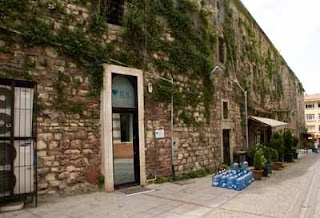I alway pay close attention to the first thought that springs into my mind when I return from the kingdom of Morpheus each morning. Recently the very first conscious thought I had was about Ala ad-Din Muhammad II (علاءالدين محمد), the Khwarezm Shah, the ruler of the Khwarezm Empire from 1200 to 1220. You will recall that the Khwarezm Shah was the titular head of Khwarezm, the empire centered on the lower Amu Darya River in what is now Uzbekistan, when Chingis Khan invaded the area in 1219. His empire, which included the famous Silk Road cities of Bukhara, Samarkand, Otrār, and Tashkent, was devastated by the Mongols and the Shah himself died an ignominious death. Having been alerted by my subconscious to the importance of these events I decided I should see for myself where they took place.
Thus I decided to interrupt my trip in Istanbul and make a sojourn to Uzbekistan. After the usual rigamarole and the expenditure of considerable coin of the realm I was able to get a much coveted Uzbekistan visa at the Uzbek Consulate in Istanbul and soon found myself winging eastward on a four and a half hour Turkish Airline flight from Istanbul to Tashkent. We landed at 1:30 in the morning and I checked into the Grand Wazoo Hotel, located about a ten minute drive from the airport.
While primarily interested in whatever traces I could find of the Mongol invasion in 1219–20, I thought that while I was in the neighborhood I better wander by a few of the other well known sights in the area. Thus after a few cups of instant coffee in the hotel dining room—the tea wasn’t fit to slop down hogs—I headed for the Zengi Ata Mosque and Mausoleum on the outskirts of town. This complex of buildings and park land is dedicated to sheik Aj-Hodzha, nicknamed Zengi-Ata, (zengi means “black”), who lived from the end of 12th to the mid-13th century. He was the fifth student of Sufi Hodzha Ahmad Jassavi, the spiritual head of the Turkic tribes of Inner Asia at the end of the 12th century. According to legend, Amir Temur, aka Tamurlane, initiated the construction of the complex, including the tomb of Zengi-Ata’s wife, Ambar-Bibi.
Entrance to the complex
Detail of entrance to the comples
Entrance to the Inner Courtyard
Minaret and Mosque in the Inner Courtyard
Entrance to the Mosque
Detail of entrance to the Mosque
Rooms for students at the Madressa (school) on the inner side of the courtyard
Entrance to a student’s room
When I visited this tomb I thought it was the burial site of Zengi Ata, although I did no see any signs actually indicating this. Later I read a guidebook which seems to indicate that this is in fact the mausoleum of Ambar-bibi, the wife of the Zengi Ata. If this is the case then it is unclear where Zengi Ata’s tomb is. Next time you are in Tashkent swing by the complex and see if you can clear up this matter, then leave a comment here. Whoever is buried in the tomb shown here it is today a popular pilgrimage site.
Tombs behind the Mosque
The Garden between the inner and outer walls





























